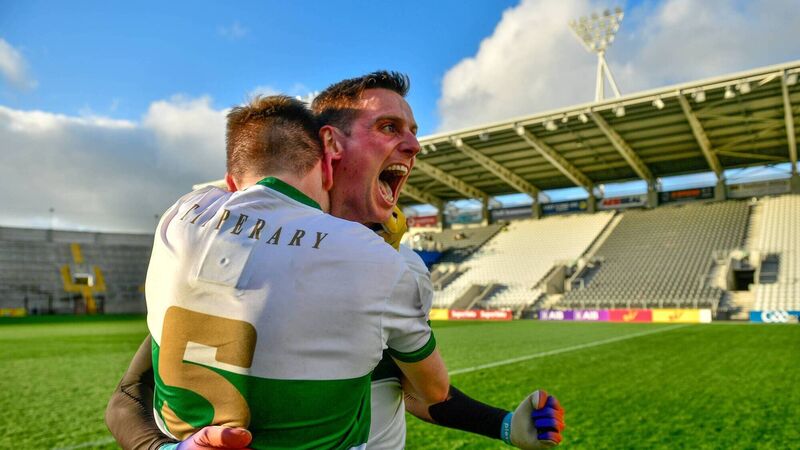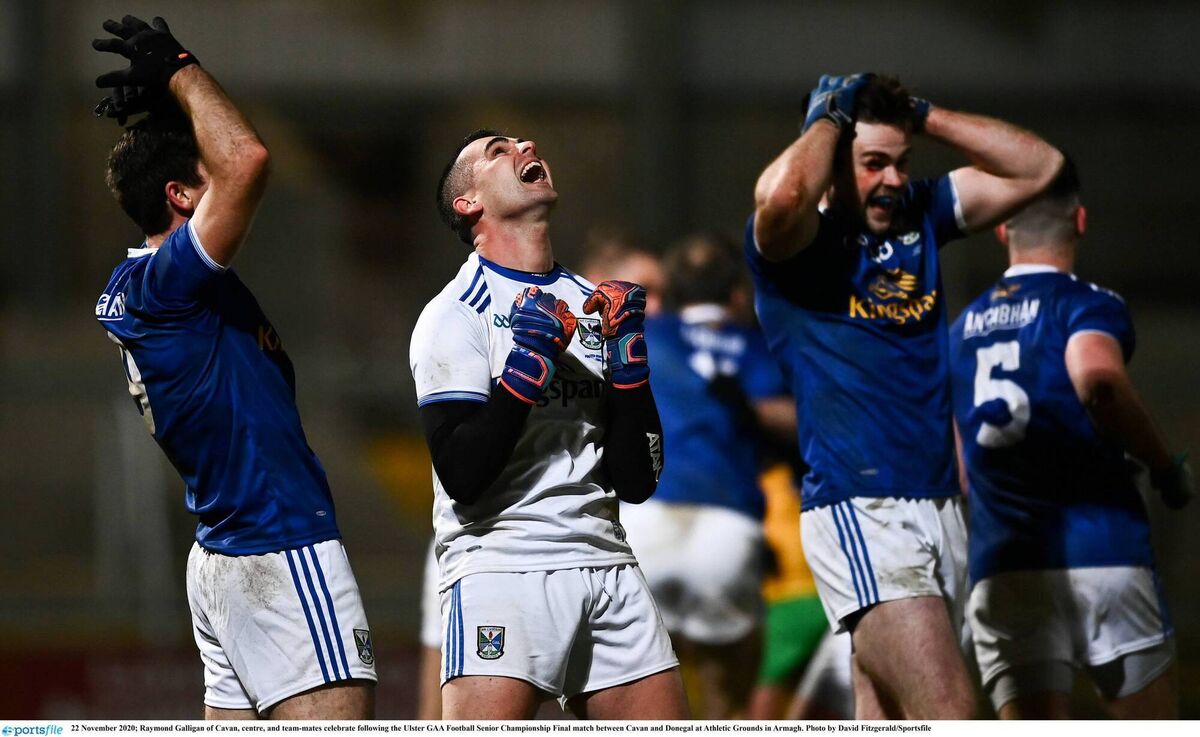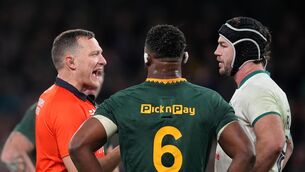Kieran Shannon: Five years on from magic of Tipp and Cavan, how many have drifted from Championship carnival?

Conor Sweeney and Bill Maher, 5, of Tipperary celebrate following the 2020 Munster SFC Final win over Cork Photo by Eóin Noonan/Sportsfile
It’s five years ago now. When Cavan players made their way to Armagh for the Ulster final not by team bus but in their own individual cars and listened to the concluding stages of the Munster final on the radio. If Tipp could shock Cork, they thought, then they could shock Michael Murphy and Donegal.
They duly did. As Damian Lawlor would put it in his book on those surreal Covid times, the odds of two earthquakes rocking the Gaelic football world on the same day had been minimal. But those Cavan players sensed that there was something in the air that winter in more ways than one. It was the year of the upset and the underdog, like a glorious throwback to the decade prior to the one before.
There is enough distance from the noughties now to see it for what it was: an extraordinary decade for Gaelic football when almost everyone felt they could beat anyone in championship.
Fermanagh reached an All-Ireland semi-final, came within a kick of winning Ulster, and played regular Division 1 football throughout the decade. Wexford reached the last four of the Sam Maguire and contested a Division 1 league final.
Sligo won Connacht and came within a kick of a ball of knocking Kerry out of championship. Laois and Westmeath each won Leinster and reached numerous All-Ireland quarter-finals. Limerick twice came within a kick of winning a Munster title and finished in the top four of the league. Monaghan got back to reaching Ulster finals and rattling Kerry in Croke Park.
The mid-cut was never so deep and never so strong and football had never had it so good.

Only it didn’t know it.
The 2010s produced some magnificent teams who between them would produce some of the greatest rivalries and games the sport has known. But from 2011 on, what else had football to offer and celebrate outside of Dublin, Donegal, Mayo, Kerry and possibly Donegal and the respective provincial breakthroughs of Monaghan and Roscommon and Tipperary’s unlikely run to the 2016 All-Ireland semi-final? From 2001 to 2010, 14 different counties had reached an All-Ireland semi-final. From 2011 to 2019, only nine did.
Then along came Covid and that surreal November Sunday, Tipp winning Munster 100 years on from Bloody Sunday and on the same day Cavan won only their second Ulster title in 51 years.
Nicky English, a hurling man from a hurling county but also once a county minor footballer, described it as the most emotional and magical day he’d known as a Tipperary GAA man. A century on from Michael Hogan being shot dead in Croke Park, his fellow countymen would be back there playing in an All-Ireland semi-final.
Half-a-decade on now though, what chances we’ll again see counties with a similar profile to Cavan’s and Tipp’s back in an All-Ireland semi-final or even quarter-final?
Football has witnessed some welcome resurgences in recent years. Armagh have got back up the steps of the Hogan Stand, Galway have got back contesting All-Ireland finals and Meath and Derry have been back in All-Ireland semi-finals. And then this year we had Louth’s joyous breakthrough in Leinster.
But Louth, who have yet to make it to beyond an All-Ireland quarter-finals and most likely never will, are the outliers. Who’s coming after them the way in the noughties a Wexford came after a Fermanagh and there was a stream of others mixing with and rattling the big boys?
In the noughties – and 2010, a year that was peak noughties – almost every county seemed ready to not just challenge the big guns but its own place in the world.
Now there is a raft of counties who seem to have accepted their fate and place in the scheme of things. Where once they aspired to making All-Ireland quarter-finals, counties like – or at least supporters from - Fermanagh, Sligo, Wexford and Tipperary seem resigned to being mere Tailteann Cup counties. They’ve drifted – not least because they’ve been cut adrift.
History has now conclusively shown that moving away from the old Division 1A-1B format was a retrograde step for the overall competitiveness of Gaelic football. For Fermanagh themselves in 2000s there was nothing surprising about them beating the likes of Seán Boylan’s Meath or John Maughan’s Mayo in championship; in the preceding years they’d also beaten those counties in the league, while also mixing with and occasionally beating the likes of Dublin.
When football moved to four divisions from 2008 on, the stronger, by playing only the stronger, only got stronger. More than reflecting various tiers in football, it shaped and led to them.
Now for the past three years we’ve had a tiered championship. You could argue it is working. Outside of one-off provincial championship games, counties are been spared mismatches. Most of their games are against teams pretty much at the same level as them.
But there’s something off when for most counties the league is now more important than championship. When your championship is often more to prepare for next year’s league than the league is for the championship campaign that’s following it. A Longford may feel it can win promotion from Division 4 but do they believe they can win a Tailteann Cup? Just 15 years ago they were routinely beating Derry and even shocking Mayo.
Just 10 years ago Fermanagh played Dublin in an All-Ireland quarter-final, a Seán Quickley not just rubbing shoulders with Stephen Cluxton but knocking into him the net for a goal. A few weeks earlier they beat Roscommon in front of a large crowd in Brewster Park. They felt part of the championship carnival. Most football followers outside of Fermanagh knew who a Quigley was. Every GAA writer did. They knew a forward or two in every county.
How many of them now know the standout players for Fermanagh or any Tailteann Cup team? How many of them even saw them play this year, though Fermanagh, a team that hover between the top-half of Division Three and bottom half of Division Two, aren’t that much weaker than they were a decade ago yet now play in front of just a fraction of the crowds?
A revision of all football competitions is long overdue and an honest conversation to be had. Does football aspire to increasing and elevating its middle class as it did with the league format it had from 2000 to 2007? Or has it given up on those who used to shake up the football world but now seem to have given up themselves?








